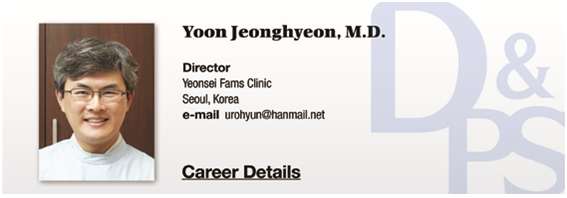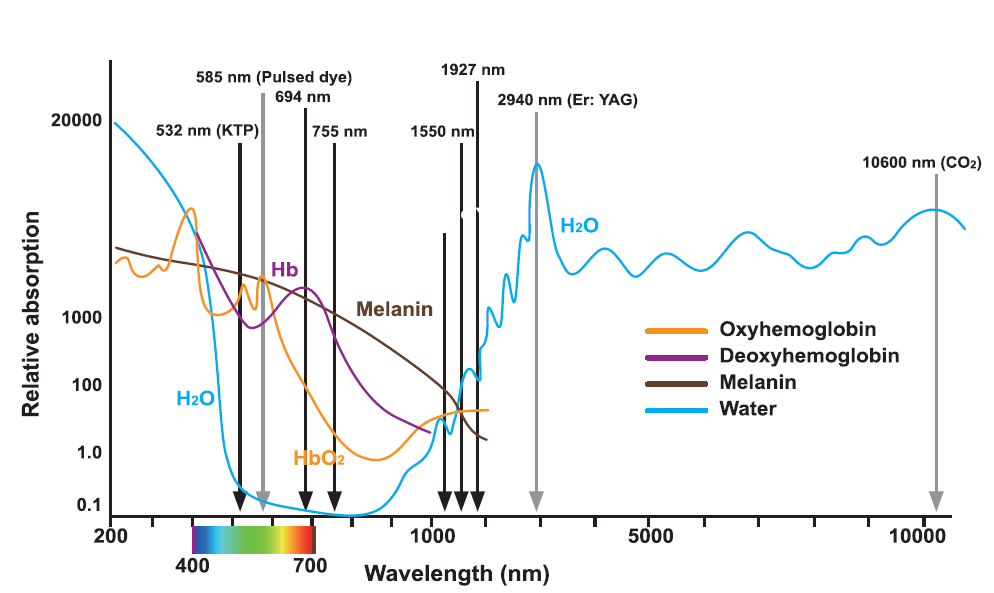
▶ Previous Artlcle: #13-7. Non-ablative Fractional Lasers
In general, when classifying lasers, they are classified into CO2 laser, Er:YAG laser, Nd:YAG laser, ruby laser, alexandrite laser, and yellow laser according to the wave length.
However, even with lasers of the same wave length, laser tissue interaction varies depending on the pulse duration.
Thus, it is also classified into continuous wave, quasi-continuous wave, pulsed laser, super-pulsed laser, ultra-pulsed laser, long-pulsed laser, short-pulsed laser, etc.
In this issue, I will describe the long-pulsed Nd:YAG laser.
[Advertisement] MAGNUM(Q-switched Nd:YAG Laser) – Manufacturer: (www.i-dana.com)]
Chromophores of Long-pulsed Nd:YAG Laser
The 1064nm Nd:YAG laser has melanin, oxyhemoglobin, and water as chromophores, but does not show as high absorbance to melanin and oxyhemoglobin as lasers of other wave lengths in the visible region (Figure 1).
However, owing to the long wave length, the optical penetration depth is deep, which increases the fluence or the spot size in the deep chromophore where the wave length of the visible light region cannot reach, and increases the pulse duration, thereby enabling to make effective laser tissue interaction that we need (Figure 2).
In addition, as the absorbance of melanin is low, the absorption of laser energy from the epidermis is low, and it is less likely to cause side effects such as blisters and eschar formation.
Thus, it can effectively attack chromophores located deep even in dark skin.
Figure 1. Absorption coefficients of melanin, hemoglobin, water.
-To be continued





















